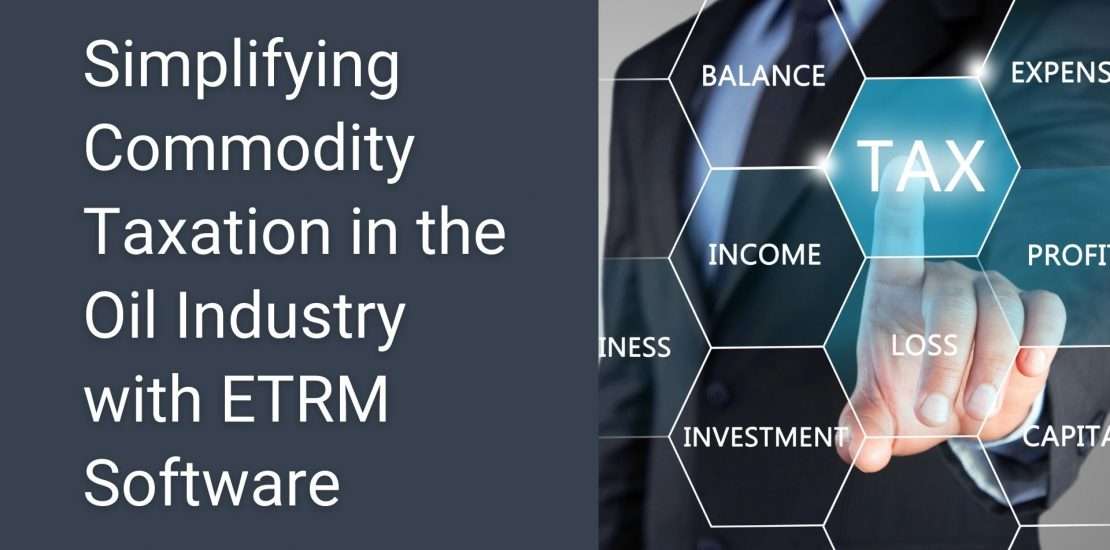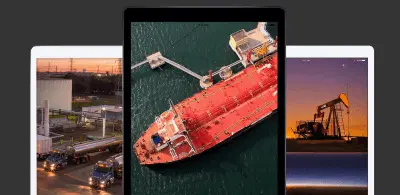Simplifying Commodity Taxation in the Oil Industry with ETRM Software
- May 26, 2022
- Posted by: Anand SEO
- Categories:

Oil and gas taxation not only varies across regions but also in the supply chain—upstream to downstream. In fact, it is quite complex owing to changes in regulations and prices that again are dependent on product type, tax type, as well as jurisdiction. Businesses in energy trading, therefore, have to accurately and effectively handle these taxes and regulatory fees. Since the trading volumes are very high, a single wrong exemption or tax calculation can have a significant impact on a business’s profitability as well as increase the risk in audits and tax liabilities.
In this article, we will understand how ETRM software can help traders simplify energy commodity taxation.
Taxation in the Oil Industry
Undoubtedly, oil and gas taxes are a major source of revenue. Additionally, policymakers in the developed nations are also taxing fossil fuels in a bid to limit reliance on these fuels and encourage the adoption of alternative, greener fuels to reduce greenhouse gas (GHG) emissions.
Let us have a look at the backbone of the taxation on energy commodities.
Upstream taxation
Upstream taxation involves rent sharing between the government and the business (primarily investors). This can be considered compensation to the state in return for the depletion of its natural resources. In fact, upstream taxes are one of the parts of rent sharing.
Upstream taxation and investment are closely linked. These legal frameworks, on one hand, may include concessions, production sharing agreements, leases, licences, service contracts, etc., and royalties, severance taxes, petroleum revenue taxes, cost oil or profit oil, etc. on the other hand.
Downstream taxation
Downstream taxation may include import and export duties, value added taxes (VAT), and excises. However, excises are different from the taxes in the following ways.
- These are not refundable to users like VAT.
- They are calculated based on an absolute scale and are very specific.
- Their value is quite close to the final price.
- They are applicable only on specific goods and services.
In the case of natural gas, excise taxes are less applicable to industries, the rates vary widely, and in many cases, these taxes can be environmental taxes.
Moreover, there are different federal, state, county and even local taxes that add to the complexity. For instance. if you are moving a commodity from state A to state B, then tax can be levied at the destination (i.e. state B) or at the source (i.e. state A) or both. There may also be deferred tax which is not often paid straightaway with the invoice
The Role of Specialised Solutions in the Oil Industry
Energy trading involves risks and uncertainties. However, the adoption of an end-to-end energy trading and risk management (ETRM) and ERP solution can help turn this volatility into profitability by managing complex portfolios and trades. Replacing manual tasks and spreadsheets to automate front, mid, and back office operations, ETRM software streamlines
-Trading and deal capture
-Real-time reporting
-Financial accounting and taxation
-Risk management
-Contract management
-Planning
-Logistics
-Hedging
and much more into a single, unified system.
Additionally, as part of back-office operations, the best-of-breed ETRM solutions are equipped with ERP that has in-built comprehensive taxation modules that calculate downstream taxes of various types and forms. These industry-specialised solutions also ensure tax compliance and help save time by automating the collection and reporting of sales tax.
Optimising Taxation in the Oil Industry
AS opposed to popular belief, ETRM and ERP complement each other and have unique functionalities and limitations. The right ETRM+ ERP software equipped with a comprehensive taxation module designed especially for the oil industry can offer a reliable way to manage regulatory changes to ensure that any variations in commodity taxes such as state and federal excise tax, regulatory fees, use and sales tax, environmental fees, etc. are accurate and updated.
The excise tax is based on many variables including
- Where the trader originated
- Where is the destination
- Whether it’s below or above the rack
- What licenses and exemptions are involved, etc.
Therefore, to minimise liabilities, businesses should implement a solution that will primarily
- Identify tax code changes
- Identify and offer accurate and fast calculations of all types of indirect taxes
- Adjust to the changes in tax codes
- Manage counterparty licenses, documents, as well as exemptions
Inatech’s Techoil, best-in-class integrated trading and risk management solution not only support your business processes with its modern, integrated workflow but also offer advanced functionalities to support better decision-making. Truly ERP agnostic and equipped with a robust tax module, Techoil streamlines from trade capture, purchase through to invoicing, maintaining appropriate tax structures for reporting and much more.
To know more, how you can integrate Techoil seamlessly for improved productivity and decision-making, visit Techoil




